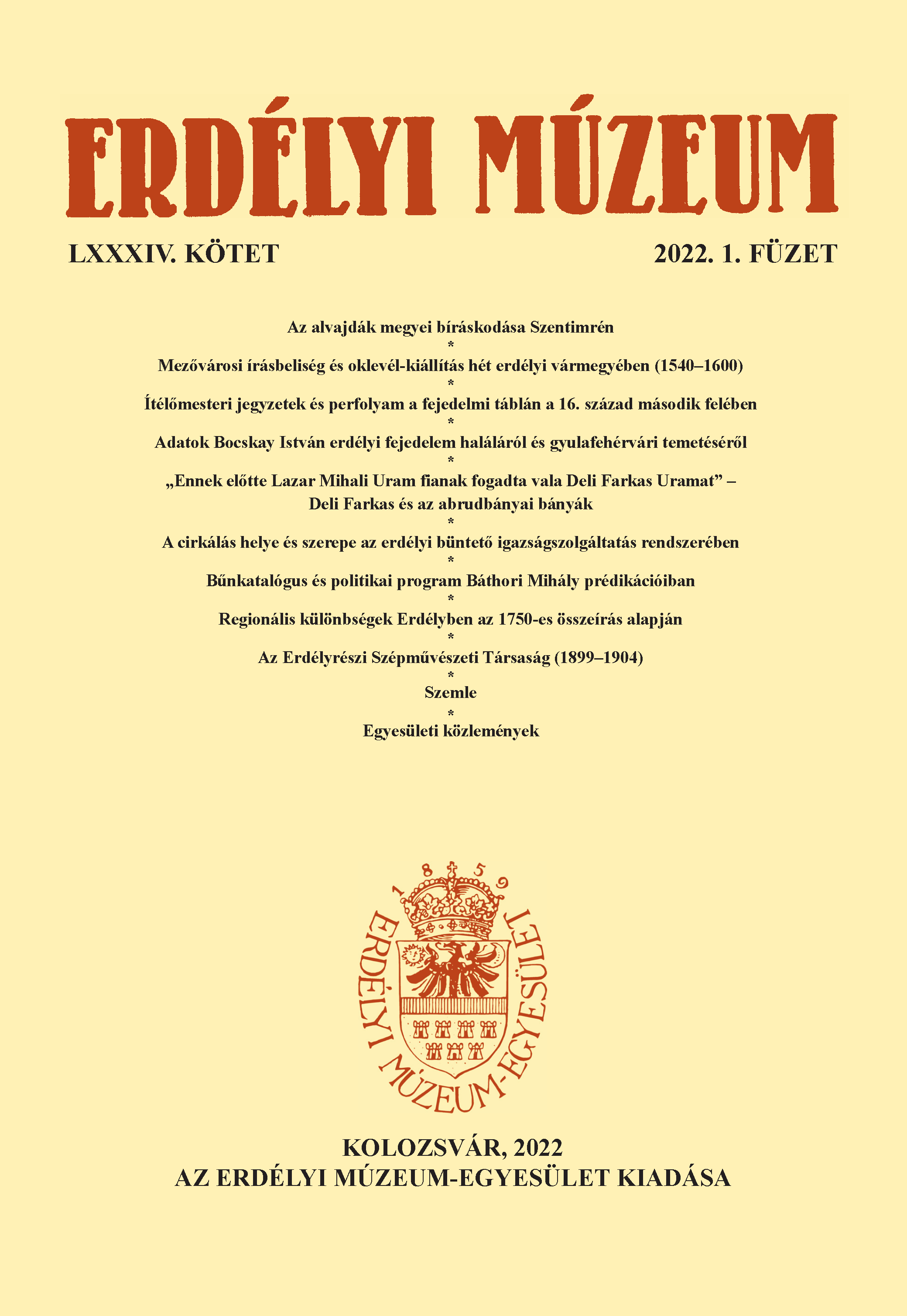Az Erdélyrészi Szépművészeti Társaság (1899–1904)
The Erdélyrészi Szépművészeti Társaság (Transylvanian Fine Arts Society) (1899–1904)
Author(s): Jenő MurádinSubject(s): Social history, 19th Century, Pre-WW I & WW I (1900 -1919), Sociology of Art, History of Art
Published by: Erdélyi Múzeum-Egyesület
Keywords: Transylvania; art life; Transylvanian Fine Arts Society; painters;
Summary/Abstract: This study describes the establishment and operation of the Transylvanian Fine Arts Society (1899–1904), emphasizing the organization’s commitment to the representation of the interests of artists living in the countryside and its contacts with the prestigious forums of Hungarian art life. The organisation was founded by a painter from Cluj, Róbert Peielle, who used his experiences at the Munich Academy and in the art camp in Dachau, near the Bavarian capital, as an example to follow. The statutes of the association were approved by Gyula Wlassics, Minister of Religion and Public Education, who allocated a large sum of money to Cluj-Napoca to support the initiative. The debut exhibition of the society took place on 12 October 1902, at the inauguration of the Mátyás statue of Fadrusz, with the participation of painters from the Budapest Art Gallery. The exhibition was held in the Skating Hall in Cluj Napoca, which was remodelled by the architect Lajos Pákei with a glass roof and overhead lighting at the Society’s expense. This upstairs wing became the venue for numerous exhibitions and the fi rst Transylvanian College of Fine Arts was opened here in 1925. The Transylvanian Fine Arts Society ceased to operate after a few years due to lack of funds and weak social mobilisation, but it remained an example of self-organising initiatives for artists living in the countryside.
Journal: Erdélyi Múzeum
- Issue Year: LXXXIV/2022
- Issue No: 1
- Page Range: 121-132
- Page Count: 12
- Language: Hungarian

